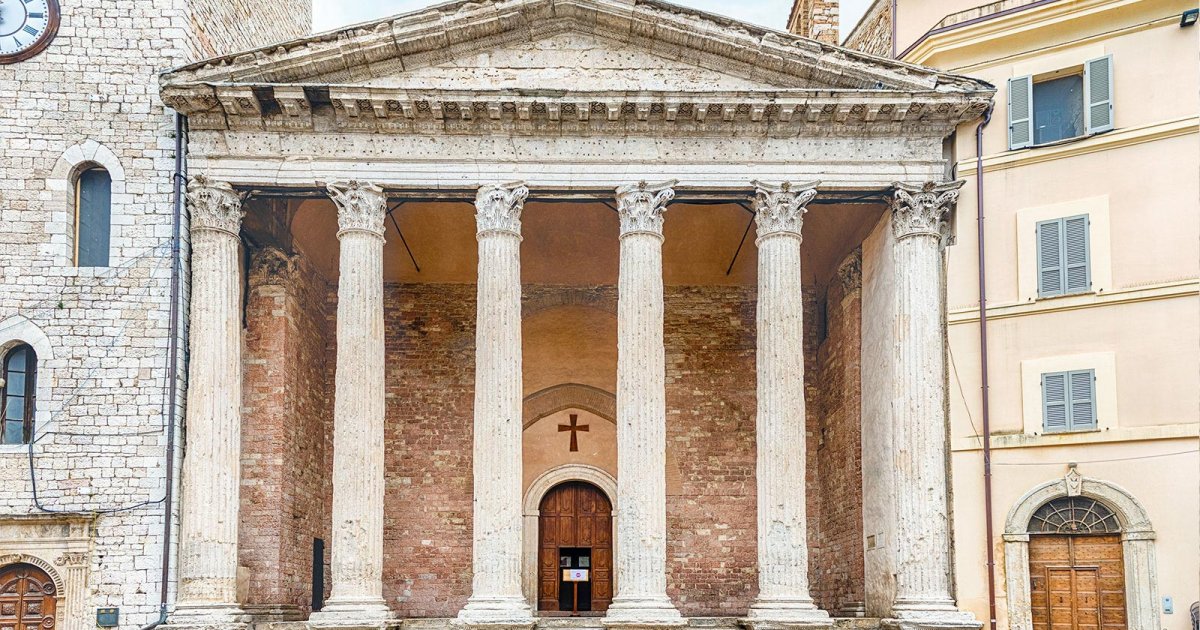PIAZZA DEL COMUNE, Temple Of Minerva
 Language: English / USA
Language: English / USA
To the right of the Tower, the six columns of the Temple of Minerva take us back to a time more remote than the Middle Ages. It is likely that Piazza del Comune was once the forum, the most important public area in Roman times where the main activities and markets took place, and where the main public, civil and religious buildings were located.
This is a classic Roman temple, built in white marble on a thick base, now below ground level. The six columns of the facade support a triangular tympanum; a rectangular room inside, called the naos, housed the statue of the deity.
As was often the case, after the fall of the Roman Empire, the temple was converted into a church, still known today as Santa Maria Sopra Minerva. It belonged to the Benedictine monks, who used it for workshops and housing, adding a little church inside, which was subsequently used as the seat of the local government and then as a prison. Finally, in the 16th century, it was turned back into the church you can see today. In Roman times, Minerva was the goddess of wisdom, while Mary, the mother of Christ, represents Christian wisdom, making this place of worship an impressive link between paganism and Christianity!
The interior was transformed in Baroque style between the 17th and 18th century.
In front of this building, you may have felt a little like Goethe, the most illustrious of the travelers that came from the North in the 18th century to discover the wonders of Italy. Standing in front of the temple, Goethe was moved at the idea of having before himself, a monument from Ancient times that had remained complete. You too will surely be awestruck at the sight of an edifice built over 2000 years ago and perfectly conserved to this day. What you might be even more amazed by, however, is that this temple is all that Goethe mentions of his stay in Assisi, with not a word for the Basilica of San Francesco and the frescoes by Giotto.
This goes to show that in the 18th century, medieval art – i.e. Romanesque and Gothic – was not widely admired, because it was considered imperfect and primitive. It’s incredible how tastes change over the years!
An interesting fact: in Giotto’s fresco “The Homage of a Simple Man” in the Basilica of San Francesco, the temple is shown with bars on the windows, because at that time it was used as a prison!



